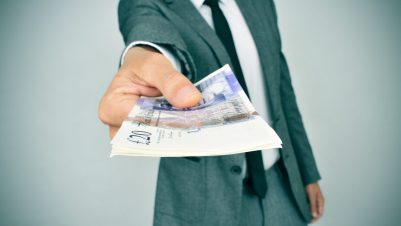THE easiest way to pay less tax is to have less income. While it might be a good strategy to rearrange your finances if you have more than enough income, for most of us a little bit more rather than less would be welcome. Of course, it is more accurate to say that you can pay less tax by having less “taxable” income. Naturally, the list of different types of tax-free income is not that long but here are some topical pros and cons to be aware of. For cash and stock exchange investments, making sure you and your spouse or partner are making the most of the annual individual savings account (ISA) limits, now £10,680 per person, is the most obvious way to ensure that the income your investments generate is tax-free. Over time, you could easily build up a substantial investment portfolio outside the tax net and these advantages are being extended to children. From 1st November 2011, junior ISAs will be available for children under the age of 18. They will operate in the same way as adult ISAs – income and capital gains generated will be tax-free. However, withdrawals from a junior ISA before the child reaches age 18 will result in the loss of the tax benefits so they are perhaps best used as a way to save for university costs.
Income not taxable
A key advantage for parents is that, unlike most other funds they invest for
their children, the income generated will not be taxable on the parent even if it exceeds the £100 a year threshold. Any child who is resident within the UK but who is not eligible for a child trust fund (CTF) (i.e. they were born before 1st September 2002 and are still under 18 years of age or were born
after 2nd January 2011) can have a junior ISA and the annual contribution limit will initially be set at £3,600. If a child currently has a CTF, he or she will not be able to hold a junior ISA as well. However, the annual contribution limit for existing CTFs is to be increased to £3,600 and it is expected that CTF holders will be able to switch to a junior ISA at some point in the future. At the risky end of the investment spectrum, capital gains made on investments in qualifying Enterprise Investment Scheme (EIS) companies and Venture Capital Trusts (VCTs) are tax-free, as are dividends paid by VCTs. They also have the advantage that 30% tax relief is available on the original cost of buying the qualifying shares for annual investments of up to £500,000 in EIS shares and £200,000 in VCT shares. At present, there are a number of new EIS companies and VCTs that are planning to cash in on the feed-in tariffs available for solar and green energy production: such companies must start trading before 6th April 2012 to meet the qualifying criteria.
Not for the faint-hearted
While electricity prices are unlikely to fall any time soon, it should be remembered that investing in such companies is not for the faint-hearted:
you could end up paying less tax because it generates no return at all! Some providers are promoting such investments heavily, based on the tax and tariff advantages at the moment, but it is never wise to get caught up in the rush to beat a deadline. The reason such investments carry tax incentives is that you are putting your money into very small, often startup, companies which is an extremely high-risk investment strategy. You should only contemplate investing after you have taken expert, impartial advice from a qualified independent financial adviser. Another way you might benefit from the feed-in tariffs for green energy is to invest in green energy production for your own home: tariff payments for domestic energy generation are tax free. Depending on the location and the system you buy, they are often quoted as yielding net returns of up to 9%. Tariff income is taxable on a business, but your practice could possibly still benefit: for example, putting solar panels on your surgery roof to both reduce your electricity costs and
generate tariff income – capital allowances will reduce the up-front costs.
‘Rent a roof’ scheme
Alternatively, your practice might benefit from “rent a roof ” schemes
offered by solar companies, where the company provides the panels and takes the tariff payments but your business gets lower cost or free electricity. There is no tax liability on such cost savings. Finally, if you want to pay less to the taxman, it is sensible to keep him happy and make sure you send in your tax return online before 31st January (paper returns must be filed by 31st October): the penalty regime for late returns has changed.
The initial late filing penalty remains a flat £100 charge but this can no longer be set aside simply because there is no outstanding tax liability for
the year. If it is a partnership tax return, there is an additional £100 tax penalty for each partner. For example, in a three-partner business, the penalty would total £400. The penalties will soon mount up if the delay in filing your return continues with the initial £100 for the first day late rising by £10 per day thereafter for the next three months up to a maximum of £900. If the delay reaches six months, then another penalty is added to your bill: this is £300 or 5% of the tax due whichever is the higher. If you are 12 months late, then you are fined an additional £300 or 5% of the tax, whichever is higher. So, even if you do not owe any tax, you could end up with penalties of over £1,600 if your tax return is over a year late. In serious cases, you may be asked to pay a penalty of up to 100% of the tax due.






